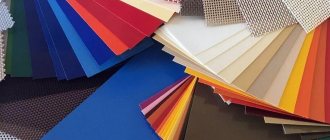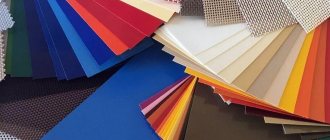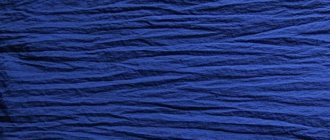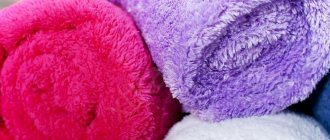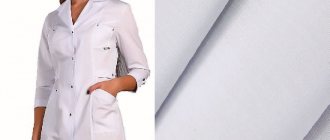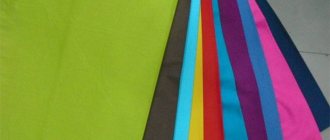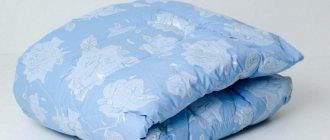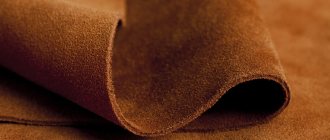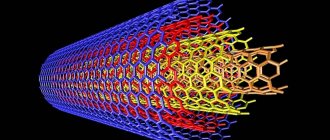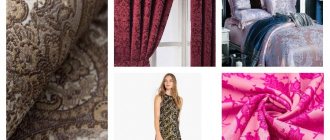In order to increase the protective properties of textile materials, innovative technologies are widely used in the textile industry. Thanks to the painstaking work of scientists, new fabrics are emerging that can withstand heavy loads in extreme conditions.
Many of us have encountered membrane materials more than once. But few people clearly understand what polyurethane is, how and why it is used in textile production.
What it represents and why it’s good
A synthetic substance with a polymer structure, due to the mixing of components, is capable of acquiring various qualities. It can be plastic and rigid, and also have different coefficients of friction. Withstands stretching up to 500% and temperature changes from -60 to +80 degrees.
Plastic is an elastomer that can return to shape after deformation loads are removed. The basis is made up of long chains of macromolecules of the urethane group. Specific features are acquired by adding additional elements.
Polyurethane technical characteristics: chemical and physical properties
The main advantage of this type of raw material is the ability to give it a variety of qualities. As an elastomer, it retains its geometry perfectly and is able to return to its original state many times. According to this indicator, this material is ahead of its main competitor - rubber. Thanks to this, it shows high wear resistance.
What is polyurethane, the chemical composition of the material and properties
Main components:
- • polyols – long chains;
- • diols – short;
- • diisocyanates.
Due to the combination of components, the necessary elasticity qualities are imparted. The results are stable compounds that retain their parameters at different temperatures and are not inclined to react with the environment. Plastic retains its structure in the presence of: oils, acids, alkalis and fats. Does not undergo hydrolysis, resistant to microorganisms (fungi, bacteria, archaea). The substance easily tolerates moderate exposure to ultraviolet radiation. It is not oxidized by ozone like rubber. This increases the service life of products.
Physical qualities
The main advantage is the ability to temporarily change the geometry and the ability to add a variety of additional properties. Products based on this material are used in various industries because it:
- • capable of returning to its original shape after removing the force;
- • shows high wear resistance;
- • maintains quality factor during heating and cooling;
- • does not allow electricity to pass through;
- • has a thermal conductivity coefficient from 0.19 to 0.25 depending on hardness;
- • creates an airtight film;
- • has a relatively low specific gravity;
- • it is possible to create parts with different transparency coefficients.
Material properties
Similarity to genuine leather and environmental friendliness are the main advantages of high-quality PU leather. In addition to the affordable price, eco-leather is characterized by a number of valuable properties.
- The structure of the material replicates the flexibility and plasticity of natural leather. It is lighter than artificial leather and genuine leather.
- It tolerates temperature changes well: in the cold, PU leather still remains soft and does not tan, and in the heat it does not heat up and is well ventilated through the micropores of the top layer of the film.
- Resistant to wear and mechanical stress: does not crack, tear, or stretch during wear.
- The microporous structure of the material does not prevent the skin from “breathing”. The material wicks away sweat and does not accumulate moisture. This is important in the production of shoes and clothing from PU materials.
- It does not have an unpleasant synthetic odor and does not cause irritation or allergies.
- Lightweight, elastic, soft material looks like genuine leather.
- Decorative polyurethane coating gives products fashionable shades and texture.
- PU leather is an inexpensive replacement for genuine leather products. Moreover, brands include a large number of leather products in their collections.
But just the presence of the designation “PU leather” on the label does not guarantee that all products made from it are of the same quality. To verify this, let’s compare PU leather with natural and PVC leather according to the main parameters.
Types of polyurethane
The chemical industry produces three main classes.
Adiprenes
These are elastic substances with good shape retention characteristics. They are used to make protective boots, tire treads for automobile transport, gaskets and seals, rollers for carts and conveyors, coatings for gratings and components in the manufacturing industry. The parts are used in cyclones, screens and separators (to protect products from wear). Frames for casting are made from plaster and concrete.
Vulkollans
Due to its increased hardness and temperature range from -60 to +120 degrees, at which the parameters do not change, this material is necessary for creating supports, bushings, and silent blocks.
Vulcoprenes
These are the types that are used for subsequent vulcanization in combination with other polymers (rubber). Allows you to achieve high abrasion rates.
What is PU leather
PU (PU, polyurethane) - all these are the names of artificial leather, which is classified as the second generation of leather substitutes. And this, of course, is not leatherette or leatherette, the properties of which we know first-hand. However, PU leather and genuine leather cannot be equated either. Although the first material is very similar to it in terms of characteristics and properties.
Before we move on to studying the features of PU leather, let’s get acquainted with the history of the appearance and development of artificial leather in our country.
Specifications
The group has quite diverse properties depending on the molecular composition and manufacturing technology. This determines the prevalence of this raw material in different areas of life.
Peculiarities:
- • Density ranges from 30 to 300 kg/m3, and is achieved using additives and production method.
- • Has a hardness of 40 to 98 units on the Shore scale. This allows you to expand the range of use.
- • Polyurethane has a wide operating temperature range from -60 to +80 degrees. There are species that can not lose their qualities at 140℃.
- • Elastic. Deformation up to 650% is possible.
- • Has high resistance, can act as an insulator.
- • The specific gravity is low, which makes the structure lighter.
- • Not subject to destruction by nitrogen, like rubber.
- • Resistant to hydrocarbon solvents (lubricating fats, kerosene, oil, diesel fuel, isooctane, petroleum ether).
- • Reacts poorly to the presence of benzene and toluene. It swells with an increase in volume up to 60% and loses its technical characteristics.
- • Has different coefficient of friction. Programming is possible depending on need.
- • Not susceptible to damage from microorganisms and fungi.
- • It is possible to give different light absorption coefficients from transparent to black.
- • Has good water resistance properties at room temperature.
Description of polyurethane products. Application
So, we found out what kind of fabric polyurethane is - it is 100 percent synthetic material that looks like genuine leather. As a rule, it is two-layer: a polyurethane top and a polyester base.
The fabric is used to make jackets, gloves, pants, skirts, shoes, bags, haberdashery, upholstery fabrics in the furniture industry, etc. The fabric lends itself well to dyeing, finishing, and decorating. It stretches easily and is pleasant to the touch, does not slip.
Trade names of polyurethane threads are lycra, neolan, spanzel, spandex, elastane, vorin, espa.
- What is composite leather: the process of creating the material, comparison with classic genuine leather
Despite the completely synthetic composition of the material, polyurethane has a lot of positive characteristics. Let's look at the properties of this fabric.
Advantages and disadvantages
Depending on what polyurethane is made of, it has both positive and negative features.
The advantages include:
- • Elasticity. According to this indicator, it confidently outperforms rubber.
- • Wear resistance. Thanks to this quality, it is widely used in the shoe industry and in the manufacture of various wheels and rollers for warehouse equipment. On the MPlast website you can select the necessary products at an affordable price.
- • The surface has a smooth structure, which allows it to maintain its presentation during use.
- • Over time, the technical characteristics remain the same (not subject to aging).
- • Resistant to most organic solvents.
- • Insensitive to ultraviolet light.
- • This plastic can be given different coefficients of friction. Depending on the needs, it is possible to create a slippery surface or good grip.
- • Easy to process. Allows casting, thermal molding, foaming and other methods.
- • Does not allow air to pass through. Thin coating makes it airtight.
- • Is a dielectric. 2 mm does not allow breakdown when 20 kilovolts are applied.
Disadvantages include:
- • Instability to media containing aromatic hydrocarbons (benzene, toluene), as well as to some acids, turpentine and chlorine-containing compounds.
- • Limited use in clothing and footwear due to breathability.
- • Becomes brittle when exposed to low temperatures for a long time.
- • Has complex recycling technology.
- • Difficult to recycle.
Trendy item for a fashionable boy
The Z-930 jacket is also stylish outerwear, created taking into account European trends, which were adapted specifically for the Russian climate. One of these trends is large briefcase pockets, sewn on the sides of the jacket and fastened with a zipper. In fact, they can replace a fanny pack, they are so roomy.
A knitted wristband is also a trend: similar elements are present, for example, in modern teenage hoodies and sweatshirts. We decided to add them to outerwear, because such wristbands are not only very fashionable, but also make the jacket warmer.
Individual elements - straps, clasps, stoppers - are made in the logomania style, with large and noticeable contrasting inscriptions.
Jacket Z-930 made of rip-stop fabric with polyurethane coating is modern outerwear for the modern teenager: active, inquisitive, who strives to dress comfortably and stylishly.
Where is polyurethane used?
Chemical plants produce this material in three forms: solid (sheet, rod, granular), fluid and foam. The first is used for the production of gaskets, protective cuffs, bushings, silent blocks and press seals. This substance has gained great popularity in the production of tubeless tires for sporting goods (roller skates, skateboards), for baby strollers, and technological equipment (trucks, electric cars, warehouse carts, guides for conveyors). These products are presented in a wide range in.
Liquid is used for sealed anti-corrosion coating of a wide variety of structures: concrete floors, roofs, screen surfaces, conveyor belts. It is used as a component in sealants, glue, varnish, and paint. During subsequent processing by vulcanization, complex protective elements are made from it: moldings and cuffs.
Foam is used for insulation of buildings and technological devices. It produces light and elastic soles for sports shoes and light-duty tires. It is not possible to list what is made from polyurethane. This material is widely in demand:
- • In heavy industry, where vibration stands are used, and where the use of conditionally movable units is necessary.
- • In the construction industry. They insulate the surfaces of buildings and create a film that protects against atmospheric influences.
- • In the automotive industry. It is used to make tires, silent blocks, cuffs and gaskets, and protective covers.
- • In medicine. It became widespread because of its neutrality. The products do not emit harmful substances and do not react with medications. Flexibility and high wear resistance allow it to be used in the preparation of prostheses, condoms, implants and coatings for equipment (crutches, beds, handrails, wheelchairs).
- • In the furniture industry. Used in the production of mattresses, garden furniture, fasteners, chairs and tables, elements for decorative finishing.
- • In the manufacture of sports accessories: treadmills, rollers, restraints in exercise machines, sneakers and sneakers, anti-slip coatings, impregnation of covers.
- • In light industry. The material is used to make shoe soles, rivets, bathroom rugs, and orthopedic insoles. Fabric imitating genuine leather is produced.
What and how is polyurethane made from?
The initial raw material for production is oil. It produces two main components - isocyanate and polyol. Their percentage composition, as well as the presence of additives, determine the physical properties of the final product. The result can be a solid, liquid or viscous substance suitable for further processing, like a regular polymer.
The fiber leaves the plant for processing in the form of granules, rods, sheets or in a liquid state. Initially, the appropriate color and degree of transparency are given. These types of supplies allow us to use simple technological solutions to produce certain products needed by the consumer.
What is special about polyurethane coated leather?
In this case, the polyurethane coating is applied not to a fabric base, as in eco-leather, but to natural animal skins with any defects or improperly processed. The polyurethane top layer solves two problems: a painted decorative PU coating with characteristic embossing corrects flaws in the natural material and at the same time preserves the properties of the natural base in the product.
Forming methods
The buyer requires a functional product that has certain properties. To achieve this, processing methods are used that are similar to those used with all plastics.
Extrusion
Polyurethane polymer is excellent for injection molding. Under pressure, the heated and softened material is fed into the outlet of the extruder. Hardening occurs in this same zone. As a result, the output is a rod with a given cross-section or a flat sheet. The resulting rolled product is cut or rolled into rolls.
Casting
This method is the most common. It is used to manufacture products with complex geometries: bushings, supports, cuffs, seals, hydraulic elements and bearings. The advantage is easy automation of the process and the ability to produce large batches. For the manufacture of piece parts, the dimensions of which can be up to several tons, casting is used on a bench. The softened mass is poured into the frame, followed by hardening and acquiring a stable shape.
To speed up the process, increased pressure is used in automatic lines. The method differs little from the technology of products made from any plastic. It is often necessary to coat a metal workpiece with polymer. Then softened polyurethane is applied manually or under computer control to the item. As it cools, the layer becomes elastic and creates a protective film.
Pressing
The prepared material (sheet, rod or granular) is fed to the apparatus, where it is shaped using extreme pressure in a limited space. The process may be accompanied by preheating or softening of the substance due to compression. This produces a part with changed properties and a clearly defined geometry. In production, this action is controlled using software.
Fill
To produce artistic or piece goods, the natural casting method is used. Liquid material is placed manually into the prepared mandrel. Under the influence of high temperature or reagents, the device freezes, maintaining the required configuration. In this way you can make a small series of any blanks. More often used for the manufacture of large forms and decorative elements.
Recommendations for care
Caring for eco-leather products requires dry periodic cleaning with a soft brush or sponge. After removing dust, it is recommended to treat the surface with a special spray.
Caring for materials containing PU is as follows:
- Wash at low temperature on a delicate cycle using soft gel detergents.
- Spinning and twisting is allowed only for elastic fabrics according to the manufacturer's recommendations.
- Ironing items made from PU fabrics is prohibited.
- For severe stains, dry cleaning is recommended.
Recycling
Resistance to weathering and aggressive environments is a challenge when recycling urethane elastomers. Under natural conditions, they do not decompose for decades. The ability to resist ultraviolet radiation and ozone makes this type of plastic a perpetual polluter of the environment. Therefore, the issue of recycling has become acute.
There are several methods to solve the problem:
- • Incineration. Like all hydrocarbons, the polymer is highly susceptible to high-temperature oxidation. But technological additives contain substances that are hazardous to the environment. During combustion, decay products enter the atmosphere.
- • Physical method. Crushed products have found application in construction, as an additive to concrete and asphalt. Due to this, they acquire a second life.
- • Melting. When heated, the waste is given the required shape and put back into circulation. The disadvantage of this method is that it is difficult to obtain a product with clearly defined characteristics from dissimilar components.
- • Glycolysis is the process of breaking down long molecules at high temperatures in the presence of catalysts. The output is short molecular compounds, which subsequently find service in industry (production of paints, varnishes, additives in asphalt concrete).
- • Chemical method. This is the splitting of chains using reagents. The goal is to obtain a substance suitable for further use.
Decor
Children's and teenagers' backpacks, handbags - all this is decorated. Products are covered with printed patterns, lacing, glitter, spraying, buckles, rivets and studs. Let's look at some of the most popular techniques for decorating bags.
- Nonwoven and dublerin: differences in compositions, manufacturing techniques and comparison of the characteristics of the two materials
- Embroidery - the front side of the product is decorated with an ornament made of beads, threads or even ribbons.
- Sequins are small metallized flakes with a hole for threading. Sequins are used to create appliqués and ornaments.
- Prints are color patterns that are printed on the surface of fabric using special equipment. Typically, durable paints are used that can withstand washing and various weather conditions.
- Patchwork is a mosaic decoration technique using textile scraps. Reminds me of an applique. Using patchwork, they create patterns and entire embroidered paintings.
- Hand painting – decorating a bag with a picturesque image.
- Rhinestones are an imitation of precious stones, usually made of colored glass. Rhinestones are used to decorate designs, prints, embroidery, and are also used independently.
- Keychains are small figurines or toys that are hung from handles or accessories for decoration. A keychain flashlight is a very practical addition to your backpack.
A bag with an abundance of decorative elements cannot be called easy to care for. It is necessary to ensure that the jewelry does not get dirty, that dust does not accumulate under it, and also to monitor the safety of the decor (sequins, rhinestones and beads often fall off, leaving the item in a very unflattering appearance).
Backpacks and textile bags can be washed at home. Usually, all things are taken out of them, shaken out well, and then soaked in a bath with gentle cleaning agents. Stubborn stains are scrubbed off with a soft brush. Remove greasy stains with lemon juice. Traces of pen and paint are removed with a stationery eraser. Specialized stain removers are also used.
The products are not twisted, straightened and left to dry. Small backpacks and handbags can be washed in a washing machine, preferably in a special clothes bag, so as not to tear off the accessories and decor due to the unevenness of the drum.
Uniqueness and interesting facts about the use of polyurethane
The ability to give a material a variety of characteristics has allowed it to appear in many industries. When playing sports, we use products made from this polymer. Clothes, shoes, and medical equipment are made from it. Modern transport (cars, airplanes, railway cars) have long used the unique properties of this substance. Its invulnerability has become an environmental problem. A few years ago, a species of fungus was discovered that requires the presence of this plastic to survive. Pestalotiopsis microspora successfully decomposes polyurethane and can be eaten. Gourmets claim that it tastes like bread. Maybe in the future this will be a solution to the recycling problem.
What is sewn from PU fabric
An artificial material made of polyurethane with a decorative surface reminiscent of luxury expensive leather is used by designers to realize their ideas in many industries: in interior design, in the manufacture of various accessories, furniture, and clothing.
They sew from PU leather:
- shoes;
- women's and men's jackets and other outerwear;
- gloves and belts;
- purses and wallets;
- covers for phones, laptops, cameras;
- bracelets for wristwatches;
- suitcases, bags and backpacks;
- upholstery for furniture and cars;
- sporting goods: knee pads, protective masks, balls, gloves, helmets.
